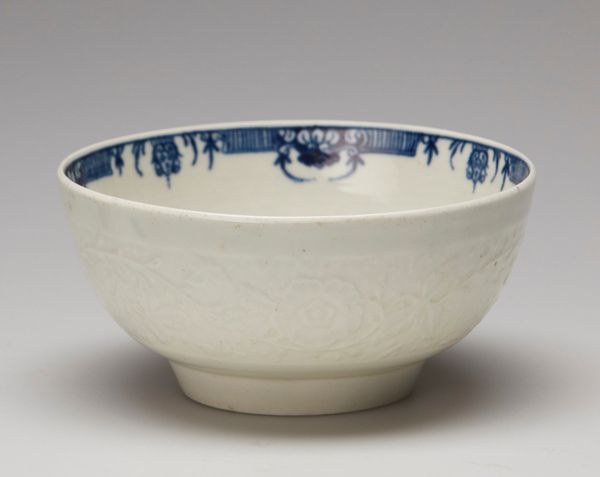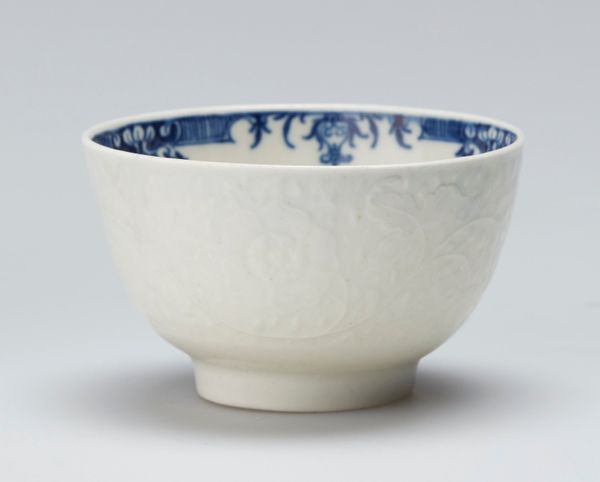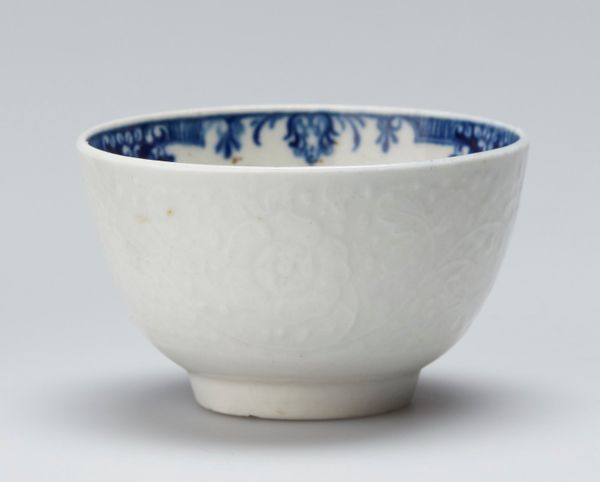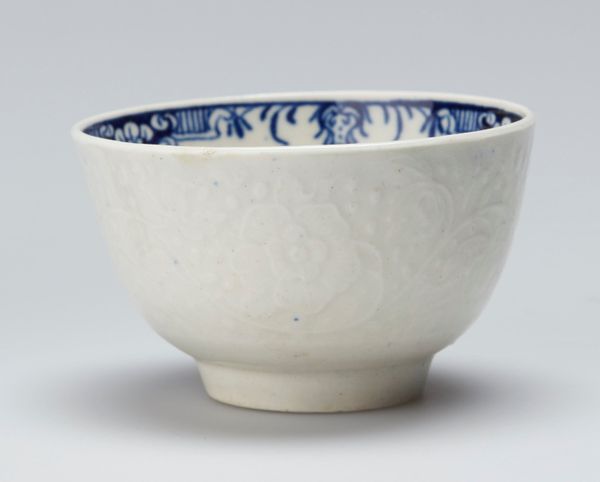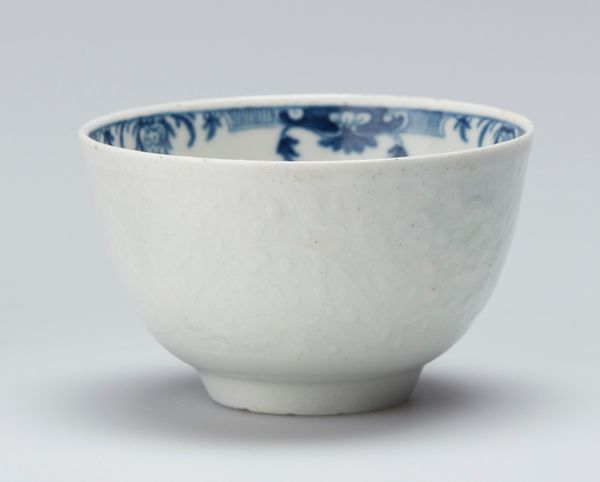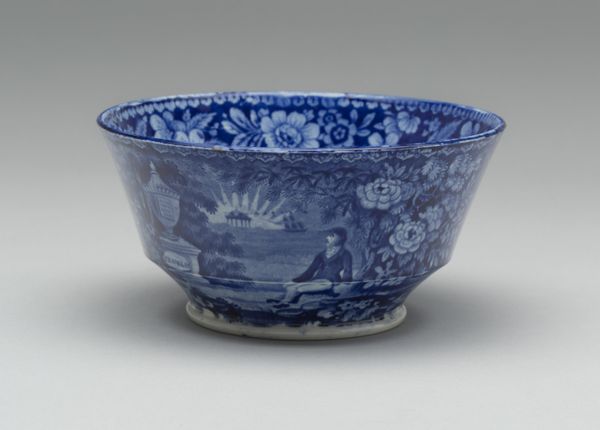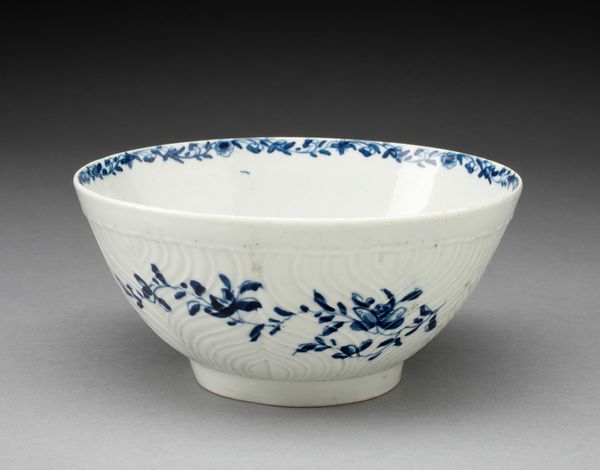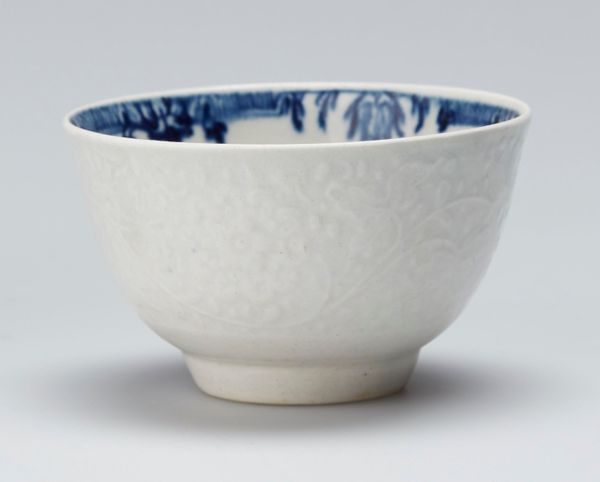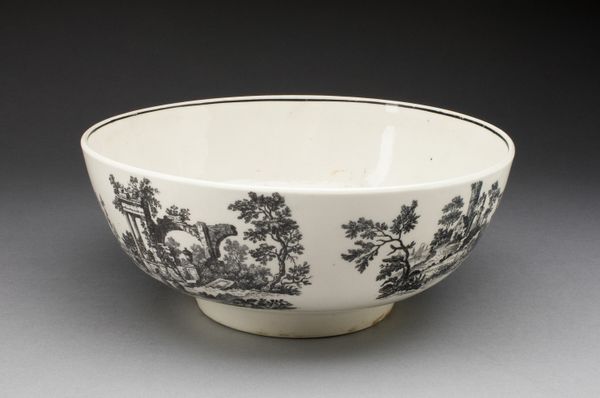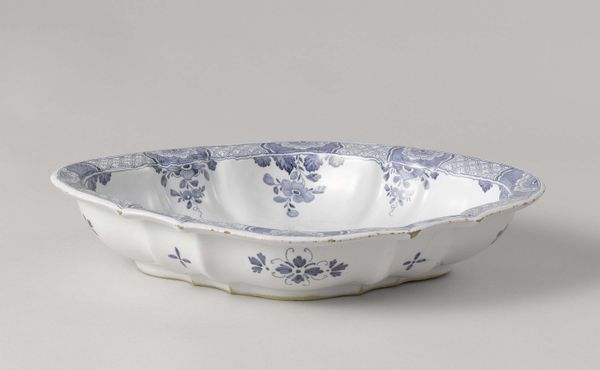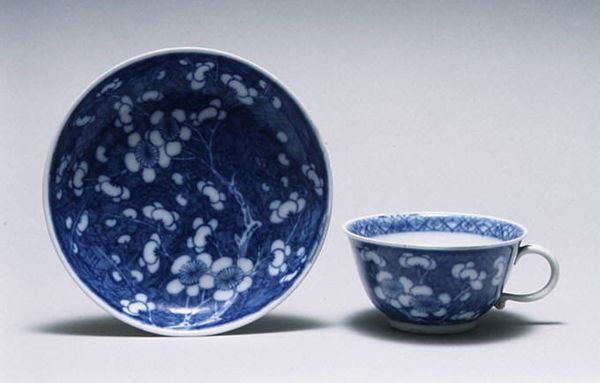
Slop bowl c. 18th century
0:00
0:00
ceramic, porcelain
#
ceramic
#
porcelain
#
orientalism
#
decorative-art
Copyright: Public Domain
Editor: Here we have an 18th-century porcelain slop bowl made by the Worcester Porcelain Works. It's quite delicate, and the blue detailing along the rim feels very intentional. How do you interpret this work in its historical context? Curator: This bowl offers a lens into the complex and often exploitative dynamics of global trade in the 18th century. Porcelain, highly prized in Europe, became a symbol of status, but its production relied on colonial networks. We must consider who had access to these goods and who was excluded, often through forced labor and unequal exchange. Does the ‘Orientalism’ style connect with these issues? Editor: Absolutely. The adoption of Chinese motifs wasn't just aesthetic; it was tied to power structures and the appropriation of cultural elements. Is there something we can draw on the composition? Curator: Consider the function of the bowl: to collect tea dregs and the remnants of leisure activities of the elite. This mundane purpose, juxtaposed with the exoticized aesthetic, highlights a tension. How can a daily-use object like this invite critical examination of power? Editor: It's interesting to think about how something so seemingly innocuous reflects broader systemic inequalities and cultural appropriation. It makes you question the stories objects tell about their time. Curator: Precisely. It's a reminder that art, even in its most decorative form, is never neutral, and is always connected to larger social, economic, and political forces. We can only change that reality by acknowledging it exists. Editor: I think that by examining things in context we can come to a place of acknowledgement, and also one of solutions. Thanks for the insights. Curator: My pleasure, let's keep interrogating the narrative of art.
Comments
No comments
Be the first to comment and join the conversation on the ultimate creative platform.
